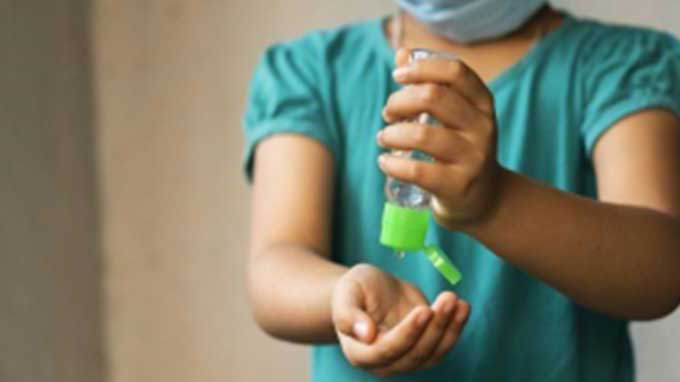Research In Action
Research In Action
Breadcrumb

Frequent handwashing, either with soap and water or a hand sanitizer with at least 60% alcohol, has been recommended for preventing infections, especially during the COVID-19 pandemic. Hand sanitizers offer a convenient alternative as people go about their daily lives, and they have become a common staple for many Americans.
However, a recent article featured in The New York Times highlights how hand sanitizers can be potentially dangerous products.
Not to Be Swallowed
In the article, 15 people in Arizona and New Mexico were treated for poisoning after swallowing alcohol-based hand sanitizers from May to June this year. Three patients developed vision impairment, which can occur if the sanitizers were contaminated with methanol, a toxic alcohol. These findings have led to strong warnings by several public health agencies:
The Centers for Disease Control issued a health alert that advises the public to use hand sanitizers for cleaning hands only. Hand sanitizers should never be consumed or ingested.
The U.S. Food and Drug Administration (FDA) created a list of hand sanitizers consumers should avoid. These include ones that are contaminated with methanol, as well as those found to have subpotent amounts of isopropyl alcohol or ethyl alcohol.
A Threat to Children
Children are especially at risk of poisonings from hand sanitizers. So far, the American Association of Poison Control Centers has received over 13,000 calls related to hand sanitizer exposures in children <12 years of age this year.
Colorful bottles, glitter, and scents are often used to mask the alcohol smell of sanitizers. Children may mistake these for food and ingest sanitizer fluid. Most hand sanitizers contain >60% alcohol by volume and are thus stronger than many hard liquors. A child is at risk of severe poisoning from swallowing even a small amount of hand sanitizer.
Sanitizer Safety
Hand sanitizers still play an important role in keeping families healthy. The American Academy of Pediatrics recently highlighted ways to safely use these products. Some key guidance includes:
- Keep hand sanitizers out of children’s reach, including small travel size containers.
- Supervise children, especially those younger than age 5, during hand sanitizer use. Make sure that they rub their hands until completely dry.
- There are a huge variety of sanitizing products available to the public. Families can consider these tips to help them select a hand sanitizer:
- Consider selecting sanitizers that are unpalatable to children. These will have the word "denatured" on the bottle or include bitter ingredients, such as denatonium benzoate (Bitrex) or butanol (also called tert-butyl alcohol).
- Hand sanitizers that are on the FDA list of recalled products should not be used. These should be returned or disposed of at a local recycling or waste management center.
- Do not make or use homemade hand sanitizers, as these may be ineffective at killing germs or lead to skin burns.
- Most importantly, if you suspect a child has ingested hand sanitizer, immediately call The Poison Control Center at CHOP Hotline at 1-800-222-1222. The Center is staffed with professionals, who are available 24/7 free of charge, to help families and healthcare professionals manage poison control issues.

